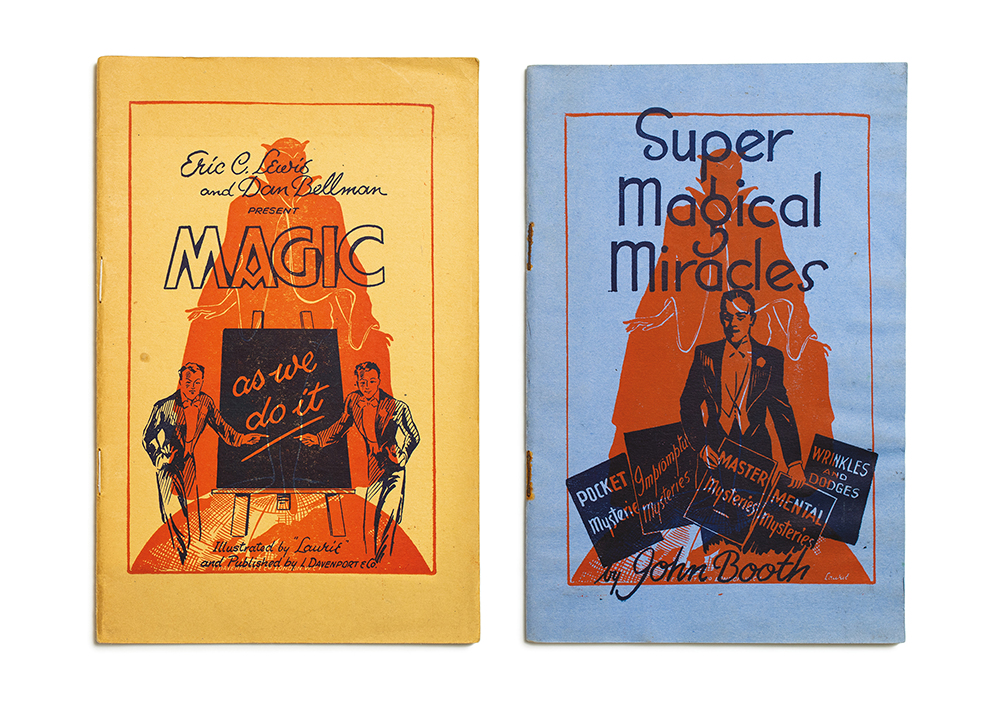
Magic is largely a solitary endeavour, but the channels of its tips and tricks had a little-known heyday around a hundred years ago. That golden era circulated secrets in printed matter packed with flamboyant custom lettering, sensational language and mystifying illustrations — largely made by and for its own community, compiled and consumed by dedicated practitioners and hobbyists. Often unregulated and infrequently archived beyond private collections, these magic papers collided with cults of personality, unshakable passion, and a thirst for notoriety.
Magic Papers, a new book from CentreCentre, features a huge assembly of printed material from the collection of Philip David Treece, a magic expert dedicated to preserving a golden era of magic publishing. This collection celebrates journals, periodicals, books and other ephemera created for the magic community between 1890 and 1960. Each book includes a 16 page gloss insert featuring a collection of magical apparatus. Where other books on the subject have focused on popular magic posters and playbills, Magic Papers looks at more ephemeral material made by magicians for magicians. It’s a very secretive community and many of these printed pieces have never been reproduced.
CentreCentre is a small publishing house run by designer and editor Patrick Fry. CentreCentre create books that celebrate the everyday and overlooked by finding and preserving obscure or unexpected design collections.
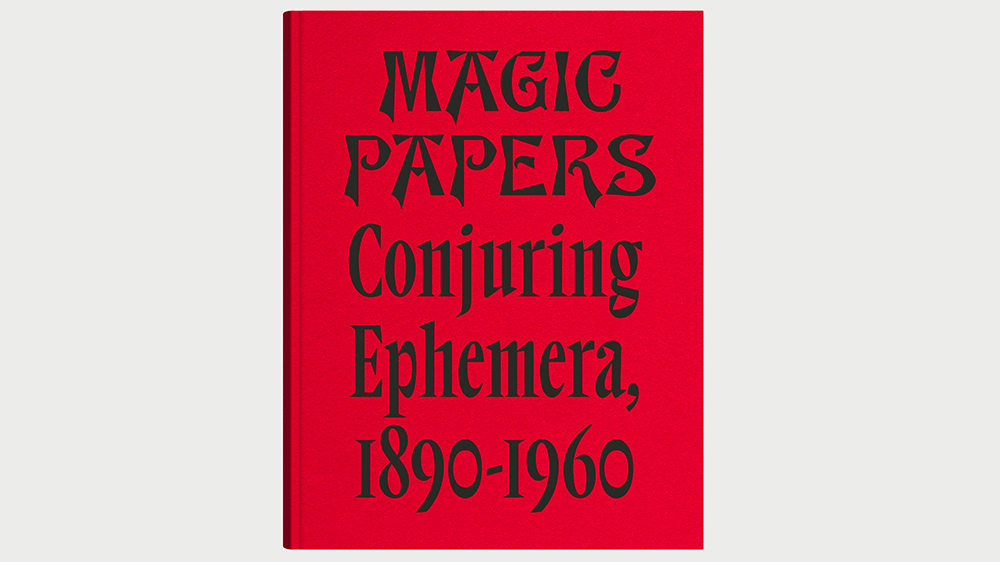
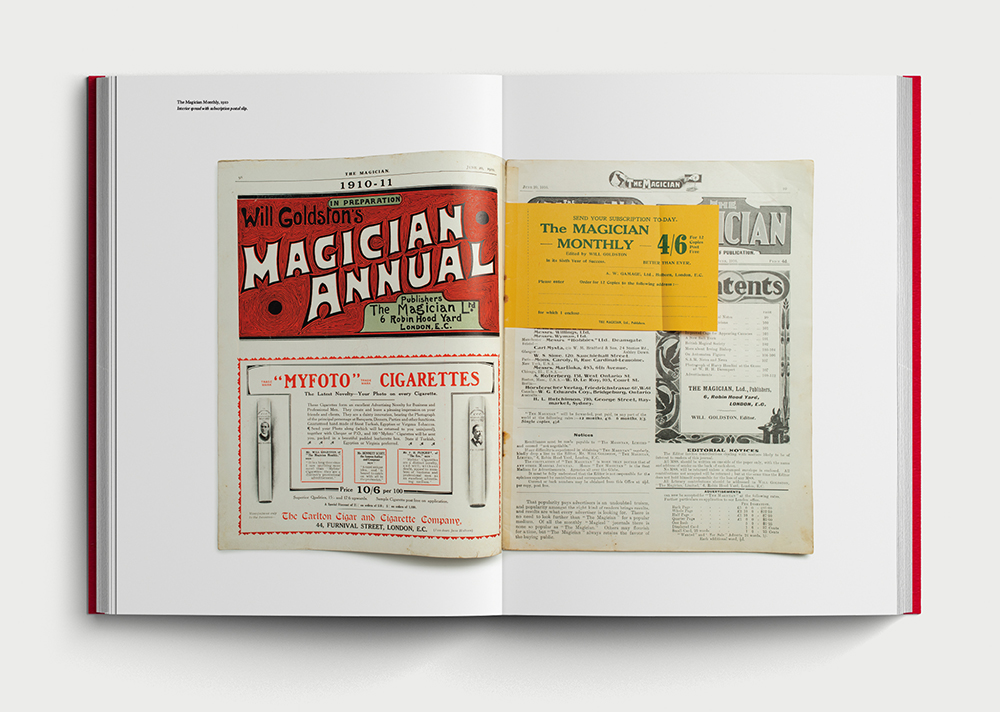
From ‘Writing for Wizards’
by Philip David Treece
This book collects a selection of magic papers from the seventy-year period in which conjuring publishing was at its height: materials created by ego-driven magicians, enterprising printers and talented artists. Although the papers merit exploration from a design perspective in their own right, itʼs worth enquiring how they sit within the history of magic publishing.
During the 19th century, most magic books and magazines were written by magicians and produced by non-specialist publishers who made use of in-house artists and designers. As the 20th century began, individuals and magic shops increased the volume of magic literature available, with many moving into more autonomous means of production. Alongside books, many shops (and a few individuals) published periodicals. Their designs, especially in early magazines, were relatively pedestrian: Mahatma, Stanyonʼs Magic and The Wizard, for instance, use little more than an illustrated masthead to differentiate their cover designs.
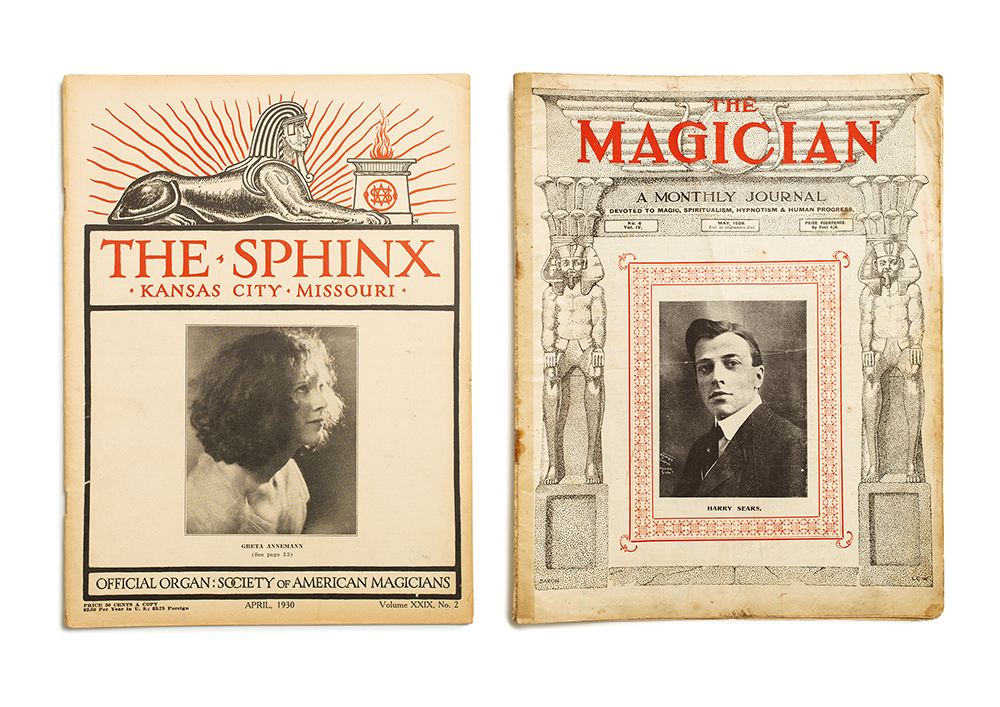
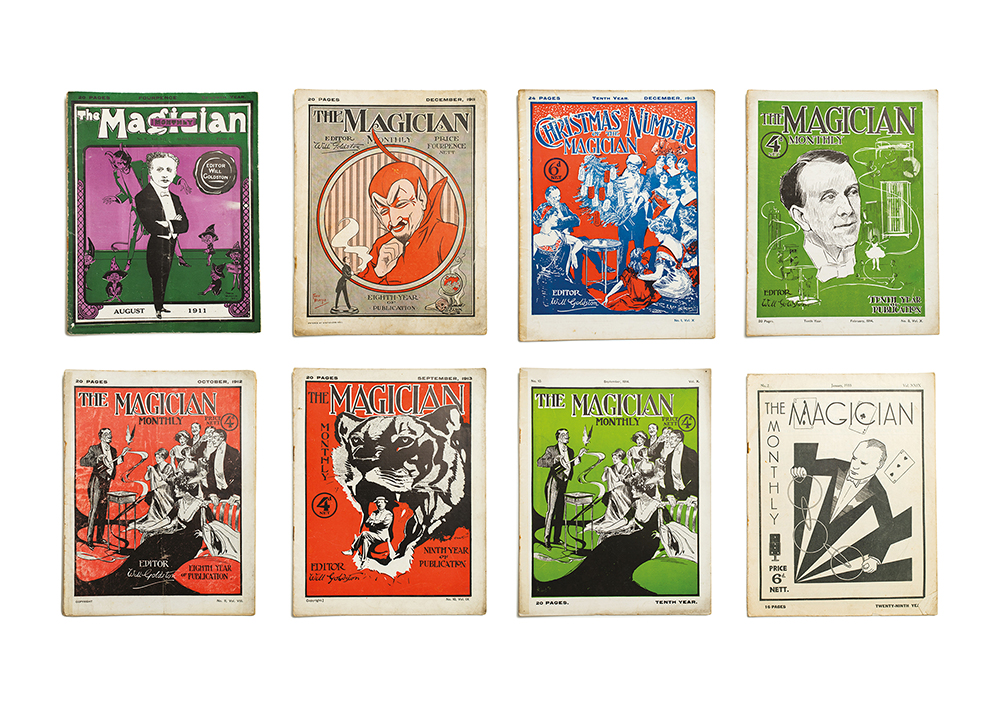
The Wizard, though, went further. Carrying illustrations beyond the masthead, it was owned from 1905 by the magic shop Ornums who employed the magician Selbit (real name Percy Tibbles) to edit and write copy. Selbit became best known for inventing the Sawing a Woman in Half illusion. In his magazine and books, he employed his brother Sidney to provide artwork and design. One of the first artists to advertise directly to magicians, Sidney offered everything from book illustrations to poster designs in a style heavily influenced by Aubrey Beardsley and Alphonse Mucha (see Selbitʼs The Magical Entertainer). Having access to a decent in-house artist was of great benefit to magic magazines, and many designers and illustrators became synonymous with specific magic shops and publishers. Beyond simply making publications more attractive, illustrations are often crucial tools for explaining magic trick methods in print.
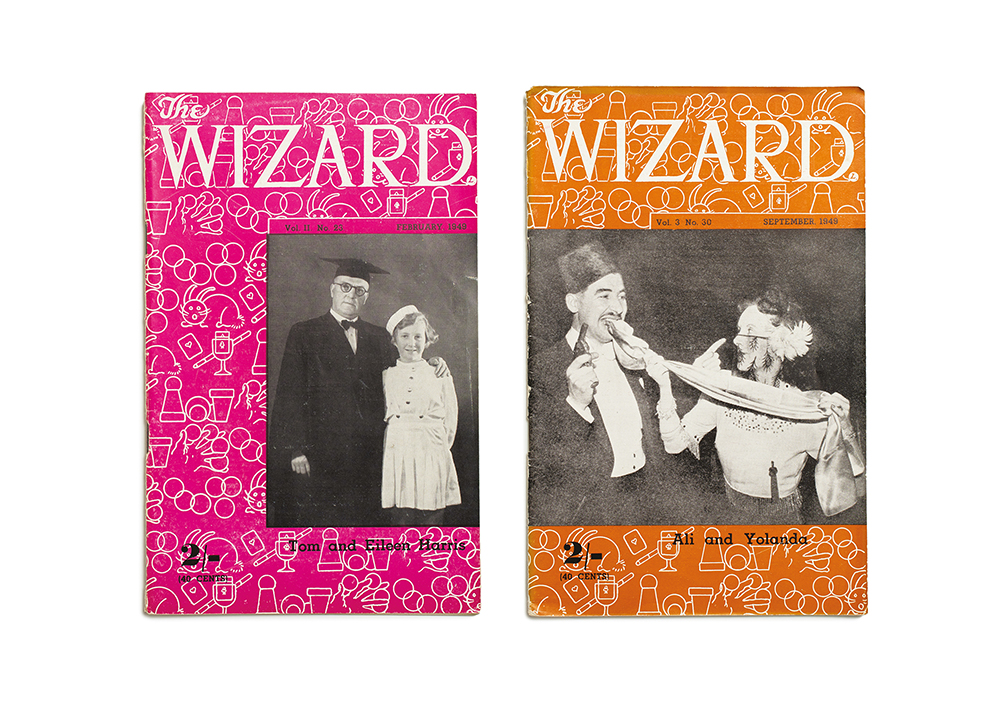
Sidney Tibblesʼ connection came through his family, but many artists found their way into illustrating magic literature through being practitioners themselves. Take Nathan Dean, a competent amateur magician who worked as an illustrator for the large publishing house C. Arthur Pearson. Founder of The Daily Express, Pearsonʼs company also produced a hugely popular range of magic books aimed at both magicians and the lay public; Dean, meanwhile, contributed to countless magic magazines besides. Most noteworthy, perhaps, is The Magic Wand: a venture begun by George Munro, owner of Ornums, who took over control of The Wizard from Selbit. In order to avoid a wrongful dismissal case from his predecessor, he changed its name to The Magic Wand in 1910. While Selbit was compiling his early issues of The Wizard for Ornums, a certain Will Goldston was working on a much grander affair — The Magician Monthly. One of the most prolific publishers of magic magazines and books in the first half of the twentieth century, Goldston published The Magician while he was running the magic section of department store Gamages in London. With this relative financial security, Goldston employed some of Britainʼs best publishing artists and designers to produce a large-format magazine, comparable with (and probably in the mould of) Americaʼs finest magic paper — The Sphinx. Amongst the many commercial artists he commissioned were Baron Low, a poster artist (who often used the pen name Nibs), Howard K. Elcock, best remembered as the illustrator of many of Arthur Conan Doyleʼs stories for The Strand, and Nathan Dean. Goldston left Gamages in early 1914 to begin a new venture: Will Goldston Ltd. It was under this mantle that he published books and magazines with talented publishing artists, eventually bringing printing in-house for some of his cheaper books.

Goldstonʼs primary competitor was London firm L. Davenport and Co. Davenports, founded in 1898, produced huge quantities of magic literature, selling wholesale to other magic shops and direct to magicians through their lavishly illustrated catalogues. They launched The Demon Telegraph in 1933. Initially released to supplement their catalogues, the periodical grew to include tricks and reviews as well as comment. Davenports owned their own printing equipment and employed their own artists and printers, which gave their books, catalogues, magazines and other paperwork a distinctive look. While other magic companies put out similar advertising magazines, few of the dealer papers could boast the readership of The Demon Telegraph in Britain.
